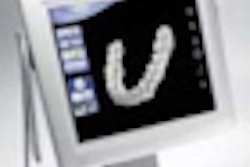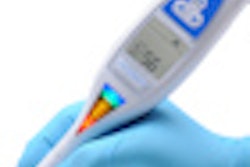The Diagnodent laser fluorescence pen (KaVo Dental) is a useful adjunct tool for approximal detection of caries, according to researchers from Ludwig-Maximilians-University (Journal of Dentistry, December 2010, Vol. 38:12, pp. 1019-1026).
In this randomized clinical trial, they set out to investigate whether the Diagnodent pen can discriminate between sound and carious approximal sites and between enamel and dentinal lesions, as well as find appropriate cut-off values.
The researchers visually and radiographically examined 117 sound or uncavitated carious sites in permanent molars. The teeth were then either opened or not and their laser fluorescence measured.
In all, 43 lesions were opened, the caries removed, and the clinically identified caries depths were registered in addition to the radiographical scoring. Seventy-four sites were radiographically deemed sound or had enamel caries and were not opened.
Taking the radiographic scoring as the gold standard for all investigated approximal sites, sound sites (n = 40) showed significantly lower laser fluorescence measurements than carious sites (n = 77) (Mann-Whitney test, p < 0.025), suggesting a cut-off at 7 (sensitivity = 0.68, specificity = 0.7).
A fair positive correlation between laser fluorescence values and radiographical scoring was found (p < 0.01). Analyzing the 43 opened lesions with their clinically found lesion depths as the gold standard, there was a fair positive correlation to the laser fluorescence values (p = 0.03) and a moderately strong correlation to the radiographic scoring (p < 0.01).
Based upon these findings, the Diagnodent laser pen may be an adjunct tool in approximal caries detection, along with established procedures, the researchers concluded.
Copyright © 2010 DrBicuspid.com



















